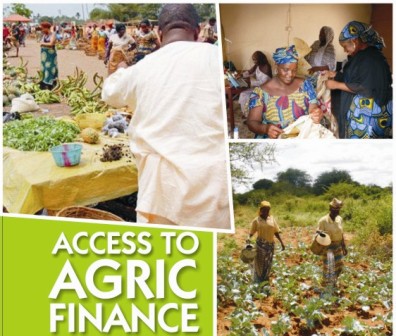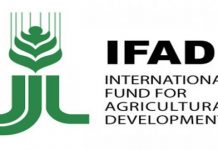The report on the State of African Agriculture launched by Alliance for Green Revolution in Africa (AGRA) has revealed that only 0.25% of bank lending goes to smallholder farmers in Africa though the sector represents as much as 40% of GDP in some African countries.
The Africa Agricultural Status Report by AGRA which was presented at the opening day of the African Green Revolution Forum today in Maputo takes an in-depth look at the stable crop value chain in 16 African countries brings together data and analysis from 15 national and international organisations.
Explaining reasons for the focus on stable crops, David Ameyaw, Director of Strategy, Monitoring and Evaluation at AGRA and one of the report’s leading authors, explained that the focus was inspired by the need to an accessible and reliable resource depicting the status and trends of African agriculture.
“Given the role agriculture plays in African economies, it is critical to have such a resource to inform the designing of policies and strategies based on current and accurate information on key indicators.”
The concept of the book runs from production, through post-harvest handling, to processing and marketing of commodities, to consumption.
David Ameyaw also explained that the report marks the beginning of an ambitious project to consolidate reliable and accessible data on African agriculture. “There are considerable gaps in our knowledge of the agricultural sector – Governments, national research institutes, but also private sector actors, need to collect and share data openly. Our aim is to extend our analysis to include all sub-Saharan African countries within a couple of years.”
The highlights of the book divided into two sections showed that low cost and subsidized food imports are weakening African agriculture markets, along with poor access to credit, trade restrictions and high transportation costs.
Just as it revealed that while a number of countries are investing heavily in Research& Development and developing their agricultural sector, others are lagging behind to the detriment of food security.
“In terms of personnel engaged in agriculture, Africa has the world`s lowest capacity with only 70 researchers per million inhabitants compared to USA and Japan with2, 640 and 4,380 respectively.
The report noted that declining soil fertility threatens crop yields and agricultural development in a number of countries. While the average price of fertilizer delivered to farms in the USA is US$226 per ton, it is US$414 per ton in Zambia.
Outdated national and regional laws and regulations restricting the development of Africa’s seed markets was also listed as a challenge to growth of African agriculture as the average length of the seed release process is around three years in most sub-Saharan African countries.
Women, who represent the majority of Africa’s smallholder farmers, according to the report, are heavily disadvantaged under current land rights systems. “This is reducing their ability to access credit, agricultural technologies and services. Evidence shows that women in Africa are five times less likely than men to own land.
Speaking at the launch of the report the African Union Commissioner for Agriculture, Rhoda Peace said “The Africa Agriculture Status Report is being published at a critical time for the continent.
Ten years on from the Maputo Declaration, we can recognise some significant progress, but we must also shine a light on areas where action and investment are urgently needed. This new resource will guide policymakers to direct resources and efforts so that they can have the greatest impact on achieving food security and alleviating poverty.”
On his part, Strive Masiyiwa, Vice Chair of the Board of AGRA, said “If we are to succeed in bringing about a Green Revolution in Africa, we need to record and understand where we making progress, but also where we are lagging behind.
SOURCE: Vanguard





